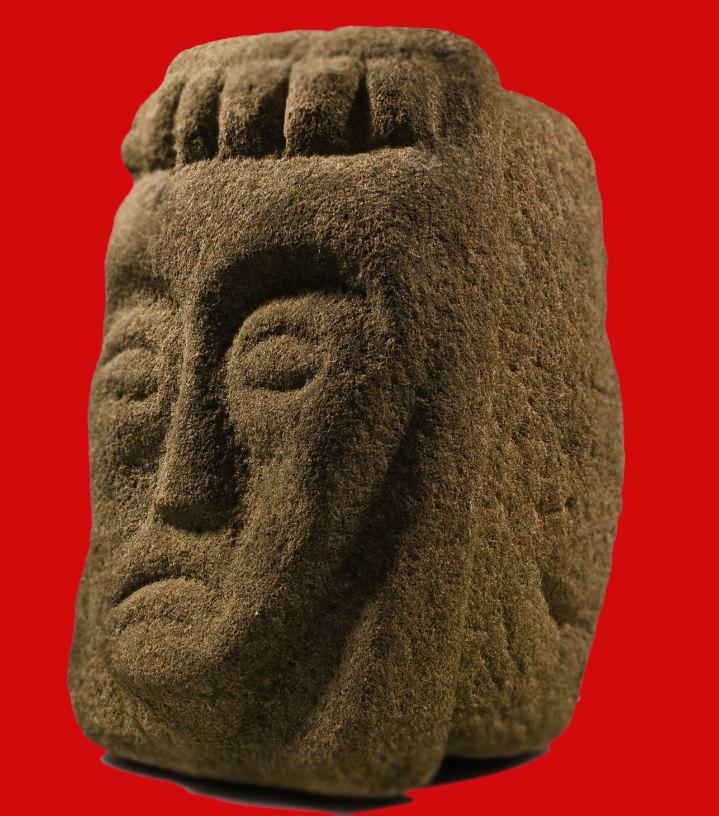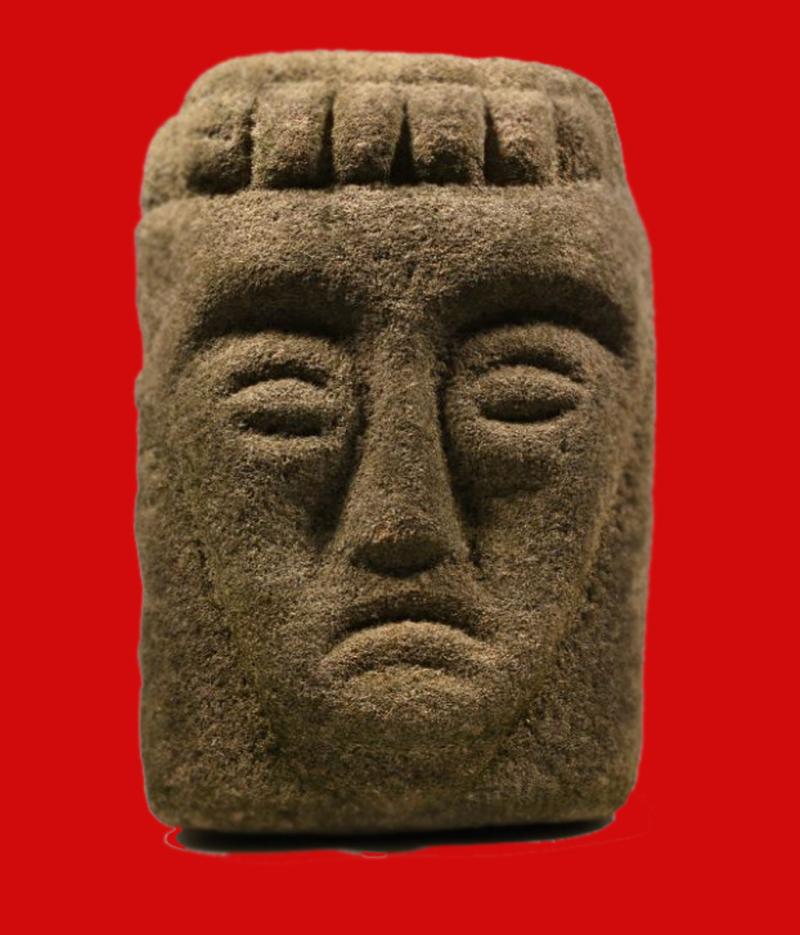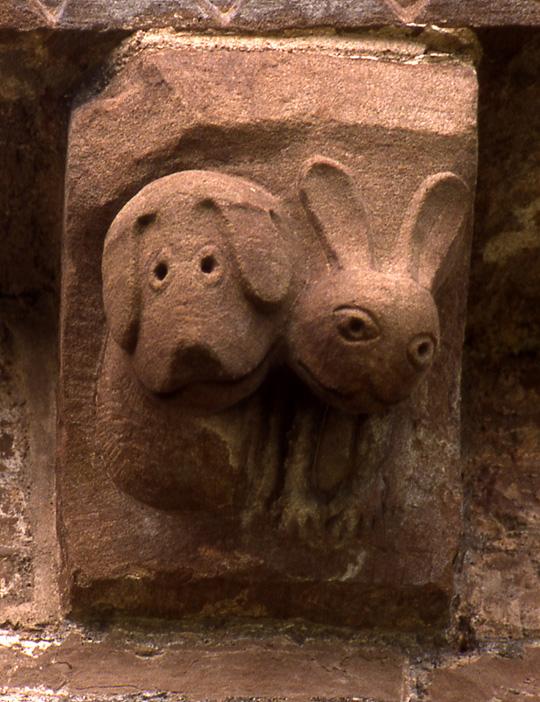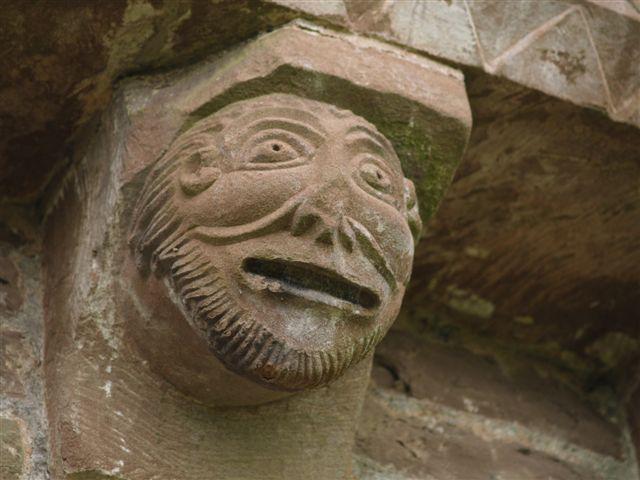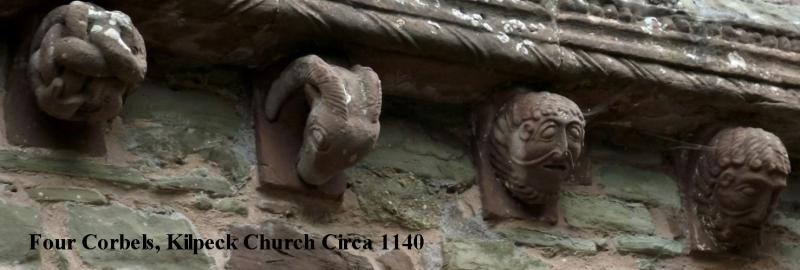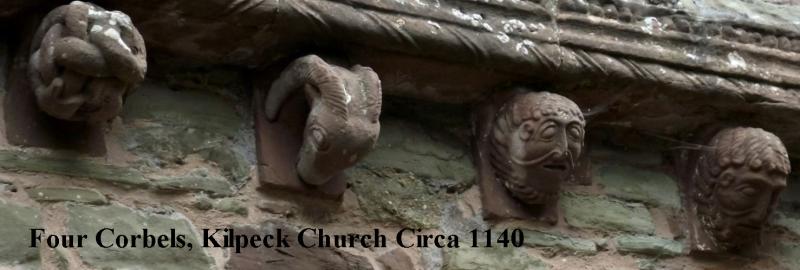A Simply Outstanding Norman Period Medieval Sculpture Circa 11th Century. A Biblical Portrait Bust From The Old Testament. Likely Removed From a Norman Church or Monastery In the Dissolution of the Monasteries
Up to 1000 years old or later, a carved stone ancient British corbel, weighing almost 55 pounds, from such as a Norman church, monastery or even castle. It is a fabulous carved head of a the grimacing first man, Adam, he from the Garden of Eden, as told in the Old Testament Book of Genesis. His face likely revealing his regret of his being cast out by God, with his wife Eve, to face the misery of life after leaving God’s paradise, after succumbing to the serpents temptation via Eve. No doubt an allegory of the warning of the consequence that awaits those that fail in their devotion and duty. Interestingly it is one of the great historic myths that it was an apple tree within which the serpent appeared, with his poisonous apple, but there is no mention of an apple or apple tree at all in the tale. It was simply the fruit of the forbidden tree that bore peri, which just means fruit, of no particular or defined kind. It could just have easily been a peach, or even a kumquat.
The tradition of using carved stone corbels perhaps derives from stone vaults, although their ribs normally rise from capitals on wall shafts and these are usually foliate or moulded. However, Romanesque churches had external corbels below the eaves which have their architectural origins in classical brackets (and before that, the ends of roof timbers). Although most frequently carved as human heads, they could be animals, figures or grotesques. Explaining the relative lack of external decoration of churches in comparison with their interiors, William Durandus {who died in Rome in 1296 wrote: ‘for although its outward appearance be despicable, the soul which is the seat of God is illuminated from within’. It has therefore been taken that the grotesques and gargoyles seen on church exteriors are there to defend the building (heaven) and those within it from ever-present evil by fighting the Devil with his own. While literacy increased in the Middle Ages, the great majority of people entering a church would not have been able to read (and in any case, any script was most likely to be in Latin before the 16th century). Medieval people certainly recognised many more scenes from the Bible than modern churchgoers, but there were plenty of other sources of inspiration for painted and carved decoration. Hagiographical stories were widely used to convey Christian messages of morality and duty, yet the stories that concluded in considerably less than perfection also convey the consequences of failing to abide by such positive devotions. Thus in this case Adam started as the ideal of hagiographical perfection, at least in God’s eyes, but faced the painful reality after falling from God’s grace and his expulsion from paradise.
After the Norman Invasion of 1066.
William was quick to bring in Norman nobles, administrators and clerics to run this new section of his Norman empire, and, in fact, he soon left to return to pressing business in Normandy, leaving instructions as he sailed back across the English Channel, returning only when he needed to lead his armies against rebellion.
Most notably this included the Harrying of the North in 1069-70 with the Domesday Book, written some 16 years later, still recording that many villages across the northern counties were ‘laid waste.’ Such was the shocking power and devastation of the occupying Norman force.
At the heart of these plans was Feudalism that, in essence, demanded the domination of the Anglo-Saxon population, both high born and low. But given that the invading force never numbered more than some 10,000 Normans, help would be needed to achieve the subjugation demanded by the new king.
As a result, Odo ordered, on the new king’s instructions, a massive castle building programme, using the famous Norman motte and bailey plans that were so well copied in other parts of the world soon after.
These Norman castles were quickly built by masons and engineers brought in from Normandy, who worked on individual projects up and down the country under the watchful eye of the Master Mason. In general, there would be 2 types of masons who worked under him, the hewers, who carved the stones, and the layers, who placed the stones in to the building.
All of this, of course, was paid for by draconian taxes extracted from the local population. Taxes and tax collection, after all, lay at the heart of why the Domesday Book of 1086 was commissioned and why the surveyors sent out to every English town and village were ordered to be so thorough.
But alongside this huge Norman castle building programme, a huge mirror programme of cathedral building was also put in place, with 15 new Norman masterpieces put up in the next 90 years or so. Of these, 13 still remain, with only 2 lost to us: Old St Paul’s, burnt down in the Great Fire of London in 1666, and Old Sarum, soon replaced by Salisbury Cathedral, pulled down in the reign of Richard the Lionheart.
Photos in the gallery from the Norman church of Saint Mary and Saint David in Kilpeck, Herefordshire, England. It shows one of the well-preserved carved corbels supporting the roof, depicting a hound and a hare, in a delightful style of cartoon-like simplicity. Carved during the mid 12th century AD (late Norman period) by an unknown sculptor of the "Herefordshire School". (Photo by Simon Garbutt).
Another corbel from the Norman Kilpeck Church by Andy Dolman Creative Commons Attribution-Share Alike 2.0 Generic
Four corbels by Ciaran Byrne
13.5 inches high, approx, 55 pounds weight
THE LANES ARMOURY, THE PREMIER HOME OF ORIGINAL AND AFFORDABLE ANCIENT ANTIQUITIES , MILITARY ARMOURY ANTIQUES & COLLECTABLES IN BRITAIN
Every single item from The Lanes Armoury, Britain's most famous, favourite, and oldest original Armoury Antique store, is accompanied by our unique Certificate of Authenticity. Part of our continued dedication to maintain the standards forged by us over the past 100 years of our family’s trading, and thus, it is a lifetime guarantee.
Code: 25806
4950.00 GBP

